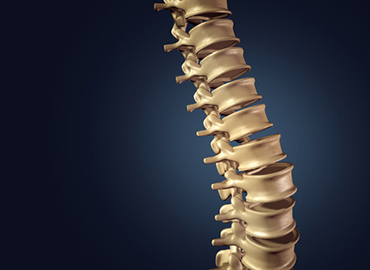Russia began to use additive cages locally made by the startup Pozvonoq. In Russia, about 10 thousand procedures are performed annually with the use of such implants, and the potential of the startup Pozvonoq allows to replace about half of this volume. Pozvonoq is planning to produce 450 standard sizes by the end of 2021.
How do intervertebral cages work
Implants of this type are needed to solve the problem of stabilizing the vertebral column – usually for patients with complicated degenerative diseases of the spine (osteochondrosis). Typical situation: intervertebral discs are so deformed that they need to be surgically removed and replaced with an implant. A solid cage holds one vertebra above another at a certain distance, which allows to keep the intervertebral openings open, free from compression.
Previously, bone and polymer cages were widely used in practice, but their key drawback was a limited range of sizes. Sometimes it was impossible to choose an implant that would not cause a person any discomfort and allow them to return to a full life as before the operation. By the mid-2010s, 3D printing technologies had developed to such an extent that it became possible to create implants that are ideally suited to a specific patient . They are made from a biocompatible titanium alloy, and 3D printing allows you to create a cellular structure that simulates real bone and facilitates integration with the vertebra.
After the operation, the vertebrae gradually fuse together through the holes of the cage into a single bone block: in fact, the cage plays the role of a skeleton, along which the new tissue is directed in the right direction. Already on the second day after the operation, the patient can get up, and about a week later he is discharged home. When installed correctly and following the correct motor mode, Keiji do not require replacement throughout life.
What’s next for the technology
The startup Pozvonoq of the North-Western technology transfer center and the Russian production company “Orthoinvest”, which specializes in the development and production of power equipment and implants for traumatology and orthopedics, plans to start production of serial 3D-printed cages in 2020. Engineering is carried out by CML AT Medical, 3D printing-TEN MedPrint from TEN Group of technospark group. The distributor is Altermedika, one of the leaders in the distribution of implants and endoprostheses in Russia.
Among the difficulties that have yet to be solved, experts in additive technologies call the imperfection of the legal framework. To date, Russia has not formulated standards for the use of printed medical devices. The development and implementation of standards is necessary – this will remove many administrative barriers to the purchase of structures, significantly expand the market and improve the quality of medical care.

